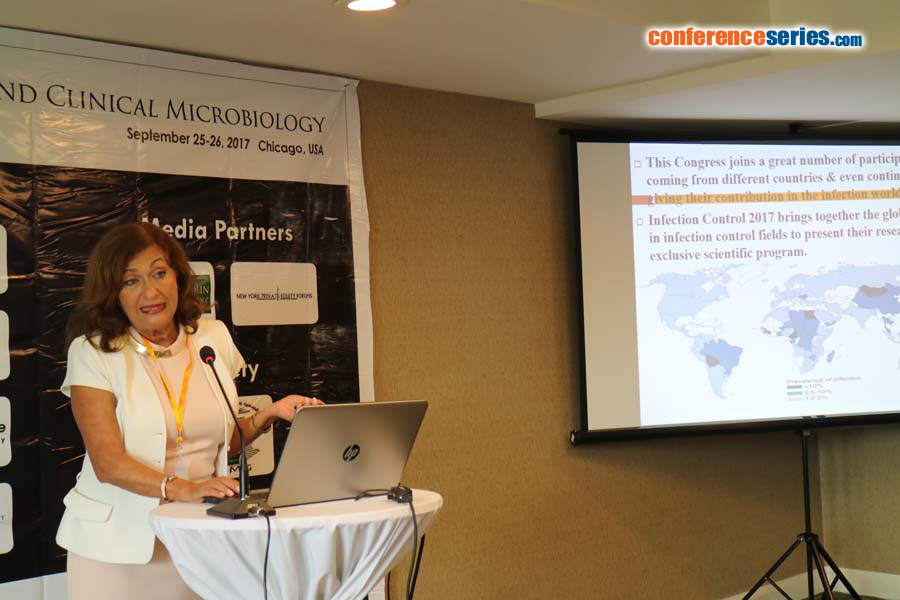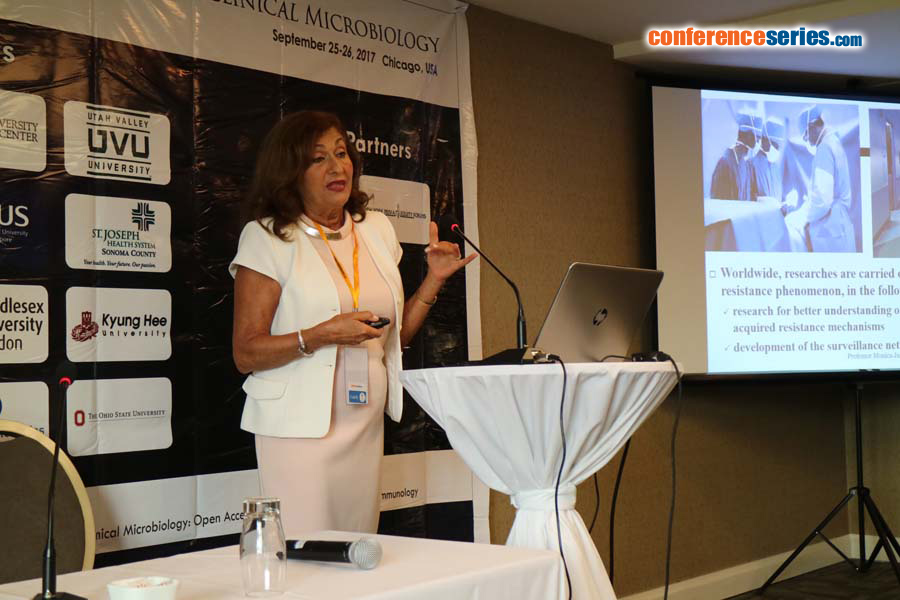
Lia Monica Junie
Iuliu Hatieganu University of Medicine and Pharmacy, Romania
Title: The resistance to antibiotics of Staphylococcus aureus strains isolated from hospitalized patients in Universities Hospitals from Cluj Napoca, Romania
Biography
Biography: Lia Monica Junie
Abstract
Background: Staphylococcus aureus infections remain a serious medical problem and prompt initiation of appropriate antimicrobial chemotherapy is important to improve the prognosis of these infections.
Methods: All cultures were incubated into the BacT/alert (Biomérieux) blood culture system. Species identification was
achieved by standard procedures and by the automated system Vitek 2 (Biomérieux). The susceptibility to antibiotics was performed using the disk diffusion method (Kirby-Bauer) according to the CLSI criteria and by Vitek 2 System, for a total of 1268 strains (855 in Greece and 248 in Romania).
Results: From 6494 blood cultures sets, positive cultures were 855 (13,2) and 51 of them (5,9%) yielded Staphylococcus aureus.
34.3% of S. aureus isolated strains were MRSA in Romania. 47.1% of the S. aureus tested strains were resistant to clindamycin
in Ro. All the S. aureus strains tested to glycopeptides antibiotics and the second line antistaphylococcal antibiotics: linezolid,quinupristin/dalfopristin was found sensitive. 16.7% of all strains were resistant to gentamicin in Ro. Moderately increased
percentages of resistance were found by testing the strains to ciprofloxacin in Ro (20.3%). Low levels of resistance were
observed by testing the strains to trimethoprim/sulfamethoxazole (3.9%) in Ro. All the S. aureus strains tested were sensitive
to all antibiotics in 2016.
Conclusion: The majorities of the isolated strains were MSSA and exhibited higher % susceptibility, in contrast to those that
isolated in 2016. Therefore, the policy that was adapted to avoid the spread of resistant strains was effective and recommended
the need to introduce the control program in Romania.







